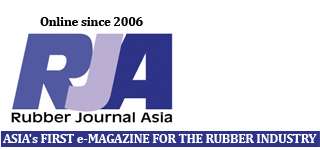Kossan Rubber Industries Bhd (Kossan) expects to double its gloves production capacity to 32 billion pieces a year by 2017 to meet the rising demand. The production expansion is also expected to sustain its earnings growth by 20 to 25 per cent for the next three years.
The gloves and rubber products manufacturer has produced 16 billion pieces of gloves as of last year and is on track to meet its capacity production of 20 billion pieces of gloves by the first quarter of 2014.
Kossan Rubber general manager Edward Yip told journalists recently that the company’s expansion plan remains on schedule. He believed that the company’s financial performance this year will be stronger than last year.
“We are consistently growing our gloves production capacity year-on-year (y-o-y) to meet the increasing demand from customers.
“For 2014, we are targeting 22 billion pieces of gloves while for 2015, we are looking at 26 billion pieces of gloves.
“The volume will grow to 29 billion pieces of gloves in 2016 and we expect the capacity production to reach 32 billion pieces of gloves by 2017.
“Therefore, we have recently acquired a total of 82 acres of industrial land within the Klang Valley to support our expansion programme,” Yip revealed the information during an event organised by Bursa Malaysia.
He explained that Kossan at present has three new manufacturing plants under construction and will be ready by the first and second quarter of this year.
He said once the three new factories are fully operational, it will be able to add another five to six billions of nitrile gloves production capacity per year to the company’s production.
He added that Kossan would also be shifting its product mix towards the production of nitrile gloves as customers anticipated more benefits from the usage of nitrile gloves as compared with natural rubber gloves.
As such, Kossan will increase its production of nitrile gloves to 80 per cent by financial year 2016 (FY16) from 60 per cent at present.
At the same time, Yip said Kossan’s utilisation rate has exceeded 80 per cent and the company is maintaining 15 to 20 per cent extra capacity to support its future businesses.
With its own research and department team, he said Kossan is targeting higher profit margin from its new production factories and lower production cost per glove which will result in better production efficiency.
Additionally, Yip said Kossan will also be expanding its presence in emerging markets for rubber products by setting up production factories in Indonesia. It is also planning to set up more regional distribution centres and warehouses to provide faster sales and services to its customers.
Kossan is also looking to expand its technical rubber products (TRP) segment as there is further room for growth drive by the automotive, marine, and aerospace industry.
Furthermore, Kossan is also looking to form strategic partnership such as merger and acquisition with local or foreign partners to enable the company achieve higher turnover.
More than 95 per cent of Kossan’s glove’s production are supplied to the medical field while more than 80 per cent of its total glove capacity are exported to developed countries such as US, Canada, Europe, Japan, Germany, Australia and so on.
Meanwhile, on the recent prices increase due to electricity tariff hike and the minimum wage policy, Yip noted that Kossan is able to handle those challenges by absorbing the cost and it will have minimal impact on the company.
On Kossan’s financial performance, Kossan’s balance sheet remained strong and its operating cashflow is sufficient to fund the company’s capital expenditure of RM70 million to RM90 million a year.
Yip noted that the company’s improving cashflow and declining net gearing will provide more opportunity for the company to declare higher amount of dividend in the future.
For FY12, he said the company has payout 38 per cent of its net profit as dividend to shareholders and he implied that there could be a possibility that the company will be paying out more than the percentage of its earnings as dividend for FY13 and FY14.
Source: Borneo Post Online
Published: 27 Jan 2014

